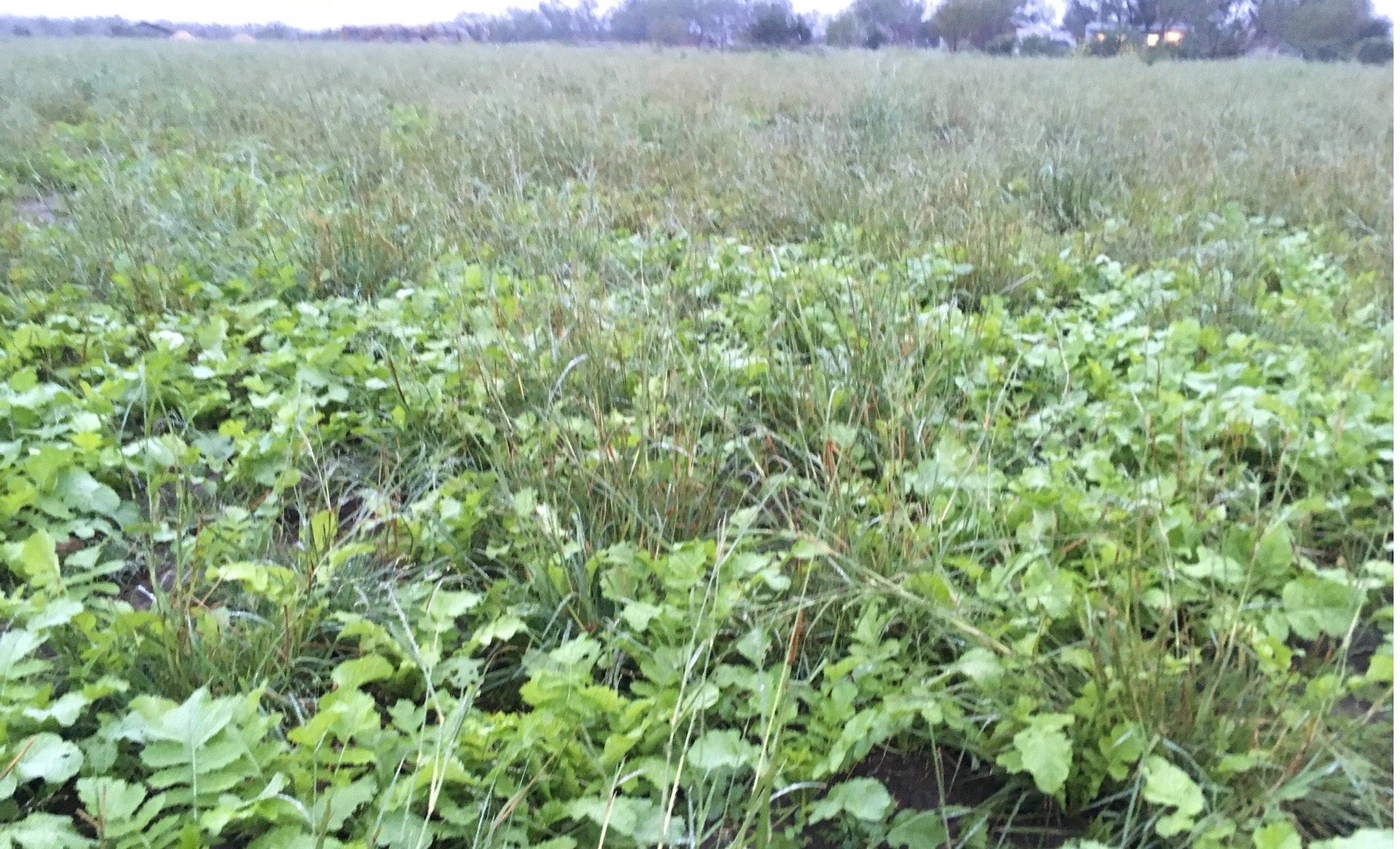Pasture cropping: a strategy for building soil fertility and improved grazing




Published: January 31, 2019
Author: Travis P Krause
Pasture cropping our perennial pastures during the fall and winter has been a great strategy for building soil and improving grazing. We have been experimenting with various mixes and applications for years.
Our technique is simple and cost effective. We begin our cover crop seeding around October 1. Most of our leases are located about one hour West of San Antonio in Medina County. Timing will be different for each location. We try to time it so that the fall rains are just beginning and the first cold fronts are just starting to push this far South. When the cattle are stocked at a high density in our perennial grass pastures we seed the cover crop using a broadcast seeder on the back of our old John Deere 2020. This tractor is light and maneuverable, which is perfect for driving across rough pastures seeding cover crops. The broadcaster seeds in 40 ft widths, so you can really cover some acreage in a reasonable amount of time. It takes us about 30 minutes to seed 10 acres going at about 6 mph. The seeds must make good contact with the soil for proper germination. The method is most effective when their is some moisture present on top of the soil.
We typically use a mix that consists of cereal grains, broad leaf forbs and nitrogen fixers. The mix we use varies with soil type, timing and rainfall. One of our favorites is oats, ryegrass, daikon radish and arrowleaf clover. For our fall mixes we also use other varieties such as triticale, wheat, hubam clover, crimson clover and purple top turnips. I typically seed at the following rate: 2 lbs daikon radish/acre, 25 lbs ryegrass/acre, 25 lbs oats/acre and 2 lbs arrowleaf clover/acre. This specific seeding rate in 2018 cost about $39/acre. I purchase all of my seed from Douglass King Seed Co in San Antonio. Don’t think that my exact seed mixture and seeding rate will work as effectively in your context. It’s all about context. Use the seeds that are adapted to your climate and soils. The method will theoretically work anywhere.
We simply haven’t had much luck in the past with pasture cropping during the summer time. Here is South Texas the perennial grasses are fairly aggressive during the summer months. This is especially the case with introduced species such as bermuda and klien grass. We will be experimenting this year with pasture cropping warm season nitrogen fixers such as lab lab and iron & clay cowpeas. I will let you know how it goes.
I hear a lot of feedback from other producers who have planted daikon radish and the cattle failed to graze it. This is where high stock density grazing is very effective. You are virtually forcing the cattle to eat it and in doing so it becomes familiar to them. A word of warning is that because of the high protein content in the daikon leaf you need a fine balance of dormant grass in the pastures to prevent your cattle from getting “washy” dung.
Winter pasture cropping has greatly benefited our soil program by covering the soil with green vegetation during a time of the year when there is often a lack of it. Keeping the soil covered is important to soil health. The daikon radish is especially beneficial to our soil building program because of it’s ability to penetrate deep into the soil (often 12” or more) and provide a “channel” for water. I’ll write more about daikon radish on another blog thread. During the fall it maintains moisture when the dry wind is blowing 40 mph from the North. Pasture cropping has also improved our grazing program substantially by filling in the “gaps” when our perennial pastures are dormant. This has allowed us to substantially reduce the need to feed hay.
